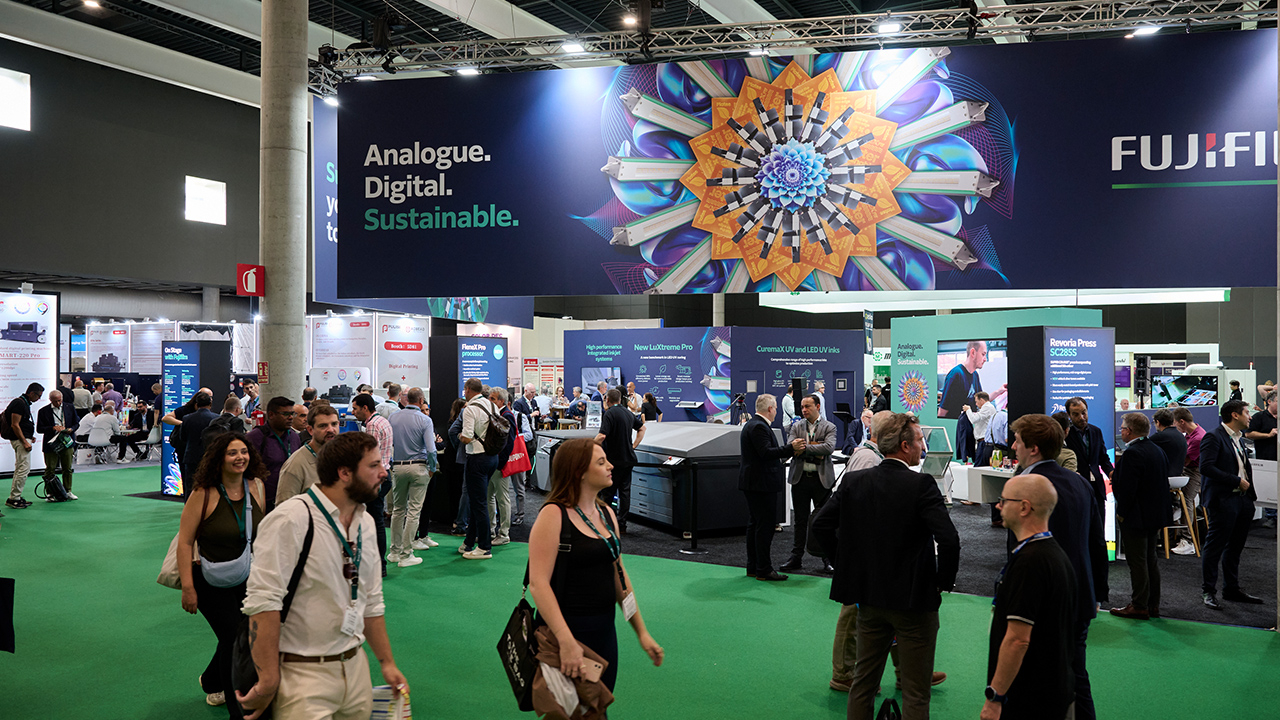Labelexpo Europe 2025: Plates and platemaking
New technology automates steps in the platemaking process, improves ink transference and reduces energy consumption.

Labelexpo Europe 2025 attendees interested in plate and platemaking technology saw a dynamic show, with numerous product launches. These new products are introducing greater levels of automation to platemaking, while reducing its environmental footprint, such as through the use of the latest LED technology. Meanwhile, plate screening is improving ink transference and innovations in plate mounting continue to minimize reliance on manual labor.
Vianord presented three innovations. The first was an Evo dryer with improved heat distribution, reduced energy consumption and faster drying speed, resulting in an 81 percent improvement in energy efficiency. The second was an LED exposure machine. Vianord also highlighted its Freedom inliner, a compact system that integrates with imaging and exposure machinery, enabling a plate to move automatically from the imager to the exposing unit to the processor.
Glunz & Jensen also highlighted an automatic platemaking system called Flex-Line, which automatically moves a plate from the washout processor to dryers, light finishers and into stacker holding slots. Additionally, the company unveiled a new wider-web 52x80in version of its LED Flex-Pose exposing unit.
Print Systems presented nine machines, including several new ones from its Quicker brand, such as the Quicker UV LED Combo, designed for plate pre-press shops and large flexo printers, developed in collaboration with Toyobo MC. This in-line machine provides mask removal, rinsing, drying, exposure and curing.
Eco3 launched the Magis Pro-Eco 300+, an all-in-one aqueous processor that includes UV LED exposure, washing, drying and finishing. Eco3 also featured its Spir@l screening capability. Screening is a process of creating shapes in the dots of the plates to enhance image quality. Eco3 creates tiny spirals in its dots for its screening technique, hence the name. Surface screening improves ink transference, achieving finer details in printing.
Esko presented its new CDI Quartz platemaking machine, also offering screening, which provides additional structure to the dots, improving ink laydown and even, the company said, potentially reducing ink consumption. Additionally, Esko exhibited its XPS Spark 4835 UV LED exposure unit, launched at Labelexpo Europe 2025, and its XPS Crystal exposure unit.
Xsys offers screening technology in its Thermoflex Edge, the third generation of its laser imager, which it launched at Labelexpo. Currently in beta testing, the Thermoflex Edge has demonstrated speeds of up to 15 sqm/hour with a single head at the 2,450 DPI. The Woodpecker Nano surface screening technology has demonstrated speeds of up to 8.5 sqm/hour, and the Woodpecker Sharp surface screening has exhibited speeds of up to 12 sqm/hour.
Fujifilm launched its Midori plates. This latest version of the company’s Flenex water-washable plates is optimized for LED exposure, while still suitable for UV exposure. Alongside the new plates, Fujifilm also launched the Flenex Pro processor.
Asahi Kasei introduced AWP-Revo plates that use Asahi’s CleanPrint technology, eliminating the need for detergent for washing, making them a more sustainable option. The plates are part of an ecosystem that includes a machine from Asahi that uses specialized brushes and water to wash the plates instead. This machine also recycles the water that it uses, another environmentally friendly feature.
Crownflex exhibited its complete platemaking system, including its speed dry cleaning processing machine. The dry cleaning machine uses thermal processing, rather than chemicals or water, so users don’t have liquid waste to dispose of afterward. Instead, a user only needs to dispose of a piece of cloth.
DuPont Cyrel celebrated 25 years of its Cyrel Fast thermal platemaking system. At Labelexpo, the company featured the newest generation equipment, the Cyrel Fast 1000 TD, which has recently become commercially available.
Meanwhile, platemounting machinery is trending toward higher levels of automation, reducing reliance on manual labor. For the first time at Labelexpo, Lehner demonstrated a robotic arm integrated with its platemounting machine. The arm picks up plates and places them onto the plate mounter, which then automatically wraps the plate around the cylinder. The only task an operator would still have to perform is inserting the cylinders. Lehner has not actually installed this particular setup at any client facility, though it received a positive reception at Labelexpo. The next step for this setup is to automate cylinder insertion.
AV Flexologic exhibited its latest SAMM 3.0 platemounter, offering more automation than previous versions. Earlier this year, the supplier launched Automated Visual Inspection (AVI), an AI-powered technology that integrates with platemounting equipment. It’s capable of identifying damaged mounting marks, and it improves accuracy and speed in the platemounting process.
Heaford showcased the manual, semi-automatic and fully automatic versions of its platemounting technology. Back by popular demand, the supplier also held its platemounting competition to demonstrate the speed and efficiency of its semi-automatic model. Sebastian Bolingbroke of MPS Systems won first place with a speed of 11.56 seconds.
Heaford’s semi-automatic plate mounter is the company’s most popular version, says sales director Tim Paul, though converters are increasingly investing in the fully automatic version.
‘As we see the transition to more complex jobs, and operator skills being more difficult to come by, we are seeing a shift to the automatic system,’ he says.
Stay up to date
Subscribe to the free Label News newsletter and receive the latest content every week. We'll never share your email address.


